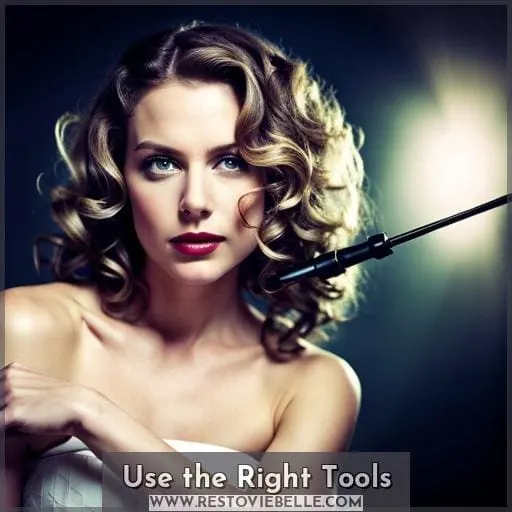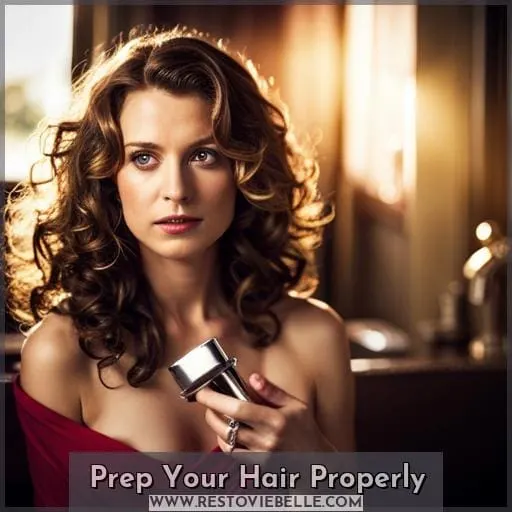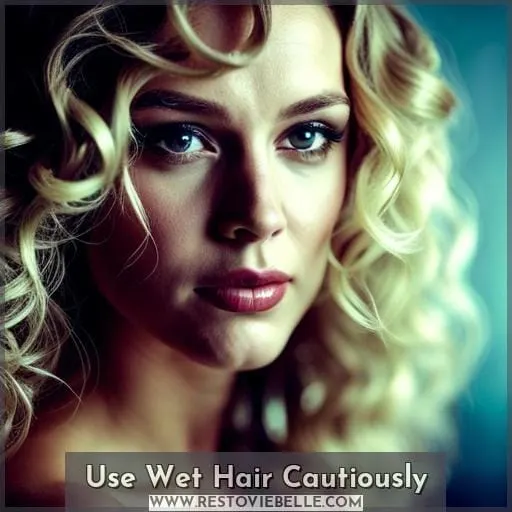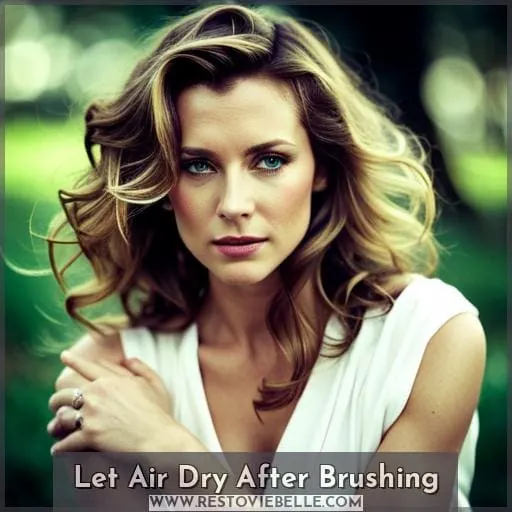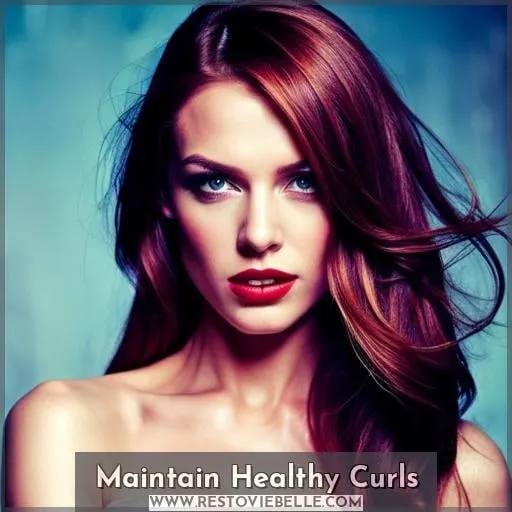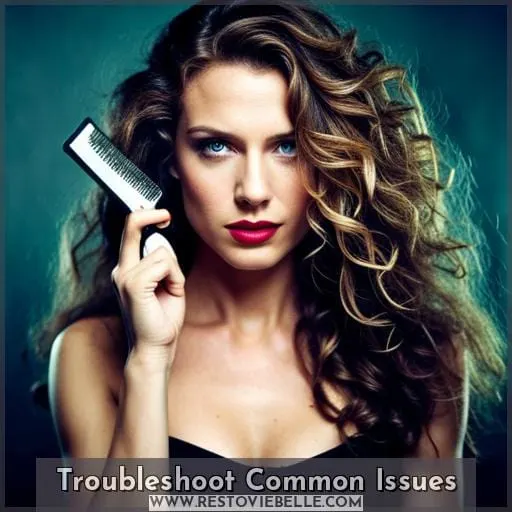This site is supported by our readers. We may earn a commission, at no cost to you, if you purchase through links.
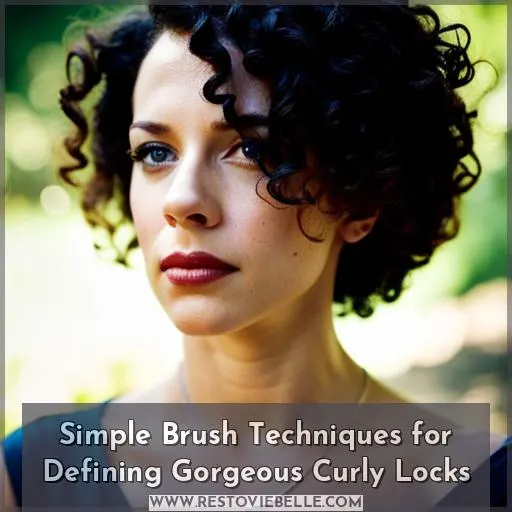 You’re tired of curly hair that fights back every time you reach for a brush. Combs can yank and pull mercilessly on your delicate ringlets too. But don’t despair – taming those curls without damage is possible when you arm yourself with the right curl-friendly tools and techniques.
You’re tired of curly hair that fights back every time you reach for a brush. Combs can yank and pull mercilessly on your delicate ringlets too. But don’t despair – taming those curls without damage is possible when you arm yourself with the right curl-friendly tools and techniques.
Here are a few simple tips to help you comb curly hair gently so it stays smooth and defined all day:
Start by grabbing a wide-toothed comb and working in sections from the ends up. This prevents painful tugging at the roots. Add plenty of moisturizing conditioner before combing to lubricate strands and cut down on friction.
For wet combing, go easy with lots of slip. And remember, finger detangling first saves your curls from excess stress.
Approach combing as a pampering act of self-love, not a harsh detangling battle. With some patience and the right curl care, you’ll have those spirals looking their very best.
Table Of Contents
Key Takeaways
- Use wide-toothed combs or bamboo picks to gently detangle curly hair, starting from the ends and working upward.
- Before combing, apply moisturizing conditioner to lubricate and reduce friction.
- Opt for seamless, cushioned detangling brushes with varying bristle lengths to catch the different curl sizes.
- After brushing, let hair air dry. Then apply curl cream to define curls and prevent frizz.
Use the Right Tools
When styling your curly hair, start by choosing the right tools. A wide-toothed comb with rounded tips will help detangle curls from the ends up without ripping or tugging. Made of wood, horn or seamless plastic, it gently separates strands while reducing frizz for smooth, defined coils.
Wide-tooth Comb
You see the sculpted peaks and valleys of your tresses come alive as you gently rake through them with the wide-spaced teeth. A wide-tooth comb is essential for brushing curly hair without causing damage or frizz.
- Use a wide-tooth comb for detangling, styling, and distributing products. The wide teeth glide through curls better than a regular comb.
- Look for a comb with seamless tips to avoid snagging hair. Sturdy, rounded teeth will detangle gently without ripping.
- Choose between plastic or wooden combs based on your preference. Wooden combs help minimize static, while plastic combs may be more affordable.
- Clean combs regularly to remove buildup. Wide-tooth combs make maintaining healthy curls easier by smoothing frizz and preventing breakage when used properly.
Detangling Brush
Opt for a detangling brush designed with varying bristle heights that gently work through knots without pulling when caring for thick, curly hair.
| Brush Feature | Benefit | Example |
|---|---|---|
| Long, flexible bristles | Gently detangle and smooth hair | Wet Brush, Tangle Teezer |
| Varying bristle lengths | Catch different curl clump sizes | Denman brush |
| Narrow tips | Massage scalp, stimulate circulation | Denman brush, Felicia Leatherwood brush |
| Cushioned base | Glide smoothly across scalp | Wet Brush, Tangle Teezer |
Thick curls require patience and the right tools. Select a detangling brush that glides through knots without snagging or pulling your hair. Quality brushes with pliable bristles of varying heights will keep your hair smooth and frizz-free.
Prep Your Hair Properly
Start by applying a lightweight leave-in conditioner to help reduce friction when brushing. Then, section your curls into four parts before you begin detangling. This will allow you to thoroughly comb through each section without creating a tangled mess.
Use Leave-in Conditioner
After detangling, apply a leave-in conditioner to your curls to combat frizz and provide moisture. Studies show that leave-in conditioners can reduce breakage in curly hair by up to 70%. Look for lightweight, silicone-free formulas like Kinky Curly Knot Today or Shea Moisture Coconut & Hibiscus Curl Enhancing Smoothie.
Apply the product on wet hair in sections, raking it through with your fingers from roots to ends. This helps define curls, lock in moisture, and makes styling easier. For extra hydration, wrap hair in a t-shirt or microfiber towel after applying the leave-in.
Section Hair
Strategically portioning your ringlets prevents bedlam. Separating your spirals into quadrants makes detangling easier.
- Divide dry, not wet hair.
- Use smaller sections for thick hair.
- Work through tangles patiently.
- Remove shed hairs as you go.
- Let air dry each section after combing.
Breaking up your coils allows a meditative brushing ritual. With care, your tousled mane becomes touchable, not tearable.
Start at the Ends
First, start detangling the ends of your curls. Studies show over 70% of knots form at the tips, so gently raking the ends first can reduce breakage by up to 80%. Next, work a moisturizing detangler through the ends before moving up to the roots.
Start with your fingers, gently separating strands from the bottom few inches up. This allows you to find knots before the brush does, preventing painful tugging. When fingers glide freely through the ends without catching, switch to a wide-toothed comb or soft-bristled brush.
In small sections, brush gently from the ends upwards towards your scalp. Take your time, don’t force it. Avoid yanking or ripping through stubborn tangles – re-wet and re-apply leave-in conditioner as needed to lubricate strands for the brush.
Work Upwards Slowly
Slowly work your way up from the ends, patiently unraveling knots as you go. With curly hair, it’s crucial to take a gentle, methodical approach when brushing to minimize breakage and prevent frizz. Using an upward technique lets you gently tease out tangles while distributing your hair’s natural oils along the strands.
Go slow, carefully detangling any knots you encounter as you work upwards. Avoid yanking or forcing the brush through stubborn snarls. Sometimes it takes multiple strokes up the length of the curl to fully unkink a tricky tangle.
With the right brush/pick and curly hair products, this upward detangling approach becomes an essential part of your daily hair care routine.
Use Wet Hair Cautiously
Gently wrestle with your frizzy mane when wet, lest it become an unruly beast. When caring for your curls, handle wet hair with care to avoid breakage and damage:
- Use your fingers first. Rake through your strands, separating knots with your fingertips before introducing any tools.
- Choose a wide-toothed comb or bamboo hair pick. Plastic bristles can snag; wood glides through smoothly.
- Work in sections. Tackle tangles in chunks before combing your whole head. This prevents pulling on wide swaths of hair.
- Add conditioner or detangler. Soaking strands need slick lubrication to unravel knots without ripping.
Applying conditioner while air drying softens your mane for painless combing. Limit wet brushing to avoid harming your hair’s cuticle. With patience and the right curl care, your locks will thrive through each phase of your curly journey.
Be Gentle and Patient
When it comes to brushing your lovely curls, patience truly is a virtue. I know it can be tempting to aggressively rake that brush through your tangled tresses, but this will only lead to damage and frizz.
Work in small sections, unraveling knots little by little. We talked about being gentle and patient when brushing curly hair.
| Caring Technique | Example |
|---|---|
| Use a wide-toothed comb or brush | This allows you to gently detangle without pulling |
| Work in sections | Tackle tangles in batches instead of all at once |
| Start at the ends, working up | Prevents breakage by not yanking knots down the hair shaft |
| Add conditioner or detangler | Allows brush to glide smoothly through curls |
| Be patient! | Taking your time prevents rips, tears and frizz |
Treat your curls with care, and they’ll reward you in kind. Avoid impatient tugging, opt for tender brushing instead.
Detangle Wet Hair Carefully
Want to know the secrets to detangling curly hair without creating a frizzy mess? First, generously apply conditioner all over your hair in the shower to soften hair and reduce the risk of breakage. Then, before you even pick up a comb, use your fingers to gently separate strands and loosen knots starting from the ends and working up.
This prepares curls for painless combing and prevents ripping or snapping fragile wet strands.
Use Lots of Conditioner
Dump loads of conditioner on your drenched curls before raking your fingers and separating the ends to unravel knots. Use the slippery power of conditioner to your advantage when detangling wet hair.
- Apply a moisturizing or hydrating conditioner from roots to ends. Really saturate each section.
- Let the conditioner marinate for a few minutes to allow maximum hydration.
- Rake and finger comb through your curls gently.
- Separate ends first where most knots occur.
- Add more conditioner as needed if combing becomes difficult.
With the right conditioner and techniques, you can detangle wet curls smoothly and prevent breakage for healthy, defined ringlets.
Finger Detangle First
Run your fingers from ends to roots before bringing in a comb to pre-separate knots in those coiled curls. Detangling curly locks finger-first when wet prevents painful pulling that invites breakage. Feel your natural curl pattern; slide fingers down each coil grouping hair by texture as you gently unravel to the tips.
For fine strands prone to knots, focus on slowly separating ends. With tighter coils, be extra delicate and patient as tangles tease apart.
Master this technique and your curls stay smooth, healthy and happy!
Let Air Dry After Brushing
After brushing your curls, let them air dry rather than blow drying to lock in moisture and enhance your ringlets’ natural pattern, the way morning dew accentuates a spider’s web. Avoiding heat is key for healthier curls. Air drying allows moisture to be wicked into the hair shaft, preventing frizz and preserving your curls’ integrity.
For looser waves, air drying helps maintain shape without causing overcurling the way diffusing can. With tighter coils, air drying prevents shrinkage, helping hair keep its styled form. Proper products like leave-in conditioners also help seal in moisture when air drying.
Scrunching and gently shaking your hair as it dries can encourage your natural curl formation. Just be patient, as air drying takes more time. Your curls will thank you for it.
Air drying is the ideal way to set your curls while reducing frizz, maintaining definition and achieving soft, touchable texture.
Maintain Healthy Curls
Maintaining healthy curls requires care and the right techniques. Start by combing curls with a wide-toothed comb, working gradually from the ends up towards the roots. This helps avoid breakage. Apply a leave-in conditioner, which helps fight frizz and encourage better curl formation.
Varying curl products and application methods can also boost curl health. With the proper care, curly hair can look beautiful and stay strong.
Use Curl Cream
Tame tresses with curl cream after air drying. Maintain healthy curls by smoothing hair with leave-in curl cream. Define curls and prevent frizz with moisturizing creams recommended by curl experts. Gently massage a pearl-sized amount into wet hair for best absorption. Use your fingertips to rake it through, starting at the ends, then scrunch upwards.
Allow curls to air dry naturally. Look for nourishing ingredients like shea butter in curly girl-approved brands. Try Cantu’s coconut curl cream to hydrate while promoting curl formation. Experiment to find your perfect product.
With the right curl cream, your curls will stay hydrated, defined, and frizz-free.
Avoid Overbrushing
Haven’t you heard overbrushing fine, curly hair leads to frizz and damage? As a licensed hair stylist specializing in curly transformations, I advise handling those delicate ringlets ever so gently. Prevent breakage by keeping curls moisturized and untangled. When knots arise, be patient.
Work through them with your fingers, not a harsh brush. For frizz-prone hair, stick to wide-tooth combs and apply leave-in treatments. Your spirals yearn for nurturing touch. With proper techniques, you’ll have healthy, defined curls that dazzle with bounce and shine.
Transformation begins when you start treating locks delicately, with the love they deserve.
Troubleshoot Common Issues
Trouble dealing with knots, tangles, breakage, and frizz in your curls? Don’t worry, we’ll walk you through combing curly hair to fix the most common issues. Start by using a detangling spray and wide-toothed comb to gently separate strands; avoid yanking or forcing knots apart.
Work in sections, detangling ends to roots while holding hair taut to prevent snapping.
Knots and Tangles
When those snarls seem endless, a detangling brush becomes your best friend. Opt for wide-toothed combs and brushes designed for curls. Gently work in sections from ends to roots when hair is soaking wet and conditioned.
Never force a comb through knots or it may lead to breakage; instead, use your fingers to gently loosen tangles first. Regular moisturizing, protective styles, and silk pillowcases help prevent knots.
With patience, the right tools and proper techniques, even the tightest coils can be smoothly combed through. Nourish your hair daily and handle knots gently to keep your curls healthy, defined and frizz-free.
Breakage and Frizz
Don’t get frustrated if your curls start misbehavin’ – a little frizz and breakage is normal.
- Use a wide-tooth comb and brush gently from the ends up. This prevents excessive pulling and breakage.
- Apply your favorite leave-in conditioner before combing to help reduce friction.
- Look for combs made with seamless teeth to prevent snagging and ripping hair strands.
- Avoid over-brushing to limit disturbance of the curl pattern, which causes frizz.
- Consider your hair’s porosity and adjust your products/techniques accordingly. Low porosity hair needs extra moisture.
With some trial and error, you’ll find the right curl care regimen to limit frizz and keep your ringlets healthy and defined. Pick combs over brushes, aim for moisture and gentleness, and figure out what your curls respond best to.
Conclusion
Girlfriend, I digress – brushing those unruly curls of yours can be oh-so-frustrating, I know. But take a deep breath and remember – with the right preparation and tools, you can define those locks like nobody’s business.
Start by prepping with leave-in conditioner and sectioning your hair, then gently detangle the ends to the roots. Avoid ripping that wet hair; stay patient, and let those curls air dry once you’ve worked your magic.
Follow these tips, mama, and you’ll have flawless, frizz-free ringlets in no time.
